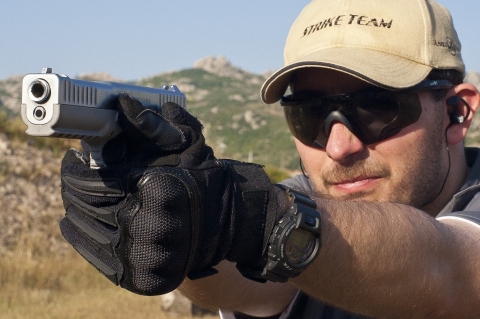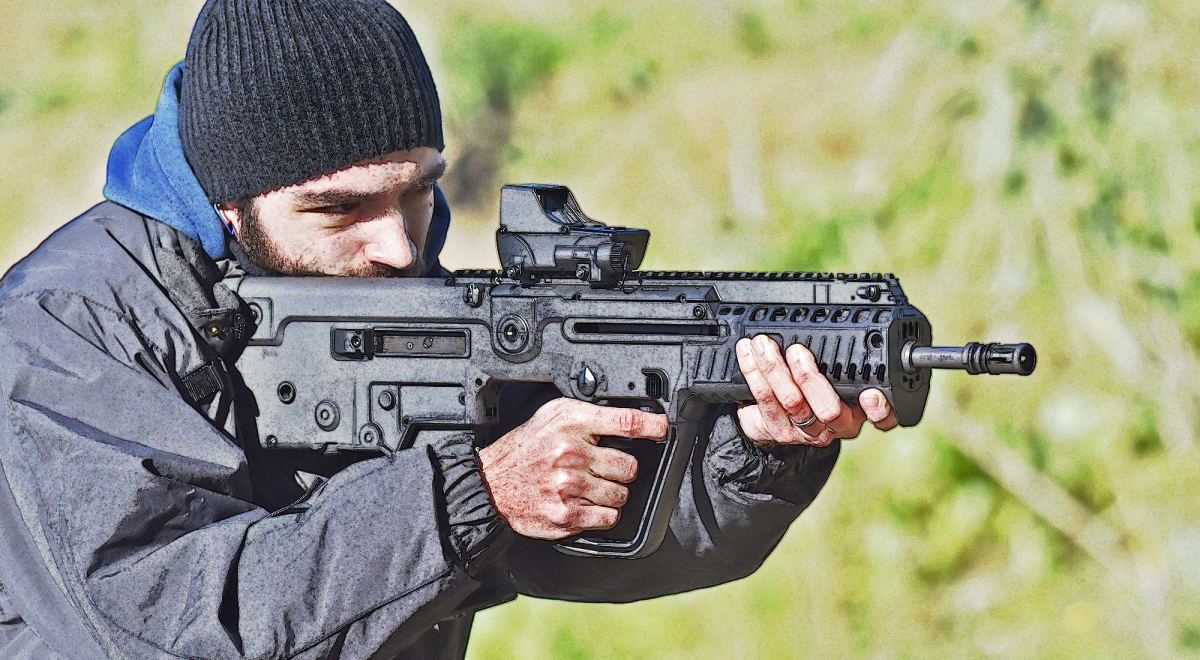IWI Tavor X95, the "civilized" warrior (the origins)
The IWI Tavor X95 is the civilian semi-automatic version of the latest variant of Israel's Tavor assault rifle: in this article we retrace its origins down to the original project
Read also: IWI Tavor X95, the "civilized" warrior (field evaluations)

An operator fires the baseline Tavor TAR-21 bull-pup assault rifle
The history of the Israeli Tavor bull-pup assault rifle starts in 1995, when the State-owned IMI - Israel Military Industries conglomerate – whose "Magen", or Small Arms division, would have been privatized in 2005 to form the IWI - Israel Weapon Industries.
The new company put together a team of designers, which included Zalmen Shebs and Tamir Porat, to develop a bull-pup assault rifle that was to be more maneuverable than both the Galil and M16 variants, particularly in the military operations on urban terrain (MOUT) and counterterrorism operations that the Israel Defense Forces would typically find themselves ingaged into.
Built around a ¼" thick polymer chassis – something that back then was still a novelty – the Tavor assault rifle entered mass production in the year 2001 and was officially adopted by the IDF as a gradual replacement for all existing individual rifle systems about five years later. In the meanwhile it entered service among élite Israeli troops and was sold abroad in significant quantities.
Today, with over 25 Countries deploying it within their militaries and even more significant law enforcement sales, the Tavor rifle can be considered the most successful bull-pup individual weapon system since the Steyr AUG.
All Tavor rifle variants sport a long-stroke gas piston system assembled to the bolt group so that the entire assembly can be easily removed upon field-strip; and a self-contained, drop-in trigger group that can be changed or replaced without the use of additional tools.

The first working prototype of the Tavor rifle

The Tavor Commander CTAR carbine, featuring a 380 mm / 15" barrel
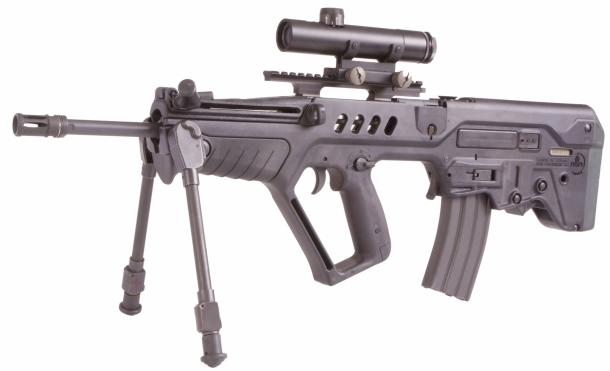
The Tavor Sniper STAR designated marksman rifle, featuring a 460 mm / 18.1" barrel

The first variant of the X95 assault rifle, hereby fitted with an IWI GL40 grenade launcher
The first line of Tavor assault rifles included four variants: the baseline TAR-21 assault rifle and the STAR designated marksman rifle, both featuring a 460 mm / 16.1" barrel; the CTAR compact carbine, built around the same chassis as the baseline TAR-21, but fitted with a 15" barrel; and the extremely short "Micro Tavor", or MTAR-21, which was built around its own chopped down polymer chassis, barely 59 cm / 23.2" in length with its 33 cm / 13" barrel.
And the MTAR-21 became the starting point of the current X95 gun we're talking about here.
While a small batch of "Micro Tavor" carbines was reportedly adopted by the Israeli MOSSAD for VIP close protection, it was scrapped in the year 2003 in favour of a new project dubbed the "Tavor 2" for the creation of a short variant of the TAR-21 which would have to be practical, effective, accurate, but also more ergonomically user-friendly.
The cocking handle was relocated from its original position over the barrel to the side of the frame, and the magazine release catch – originally a lever located in front of the magazine well – was relocated in front of the trigger guard in form of a simple, easy-to-reach button.
Eventually, the new "Tavor 2", despite sometimes being still addressed to as the "Micro Tavor" or the MTAR, developed into a totally new weapon system named the X95.
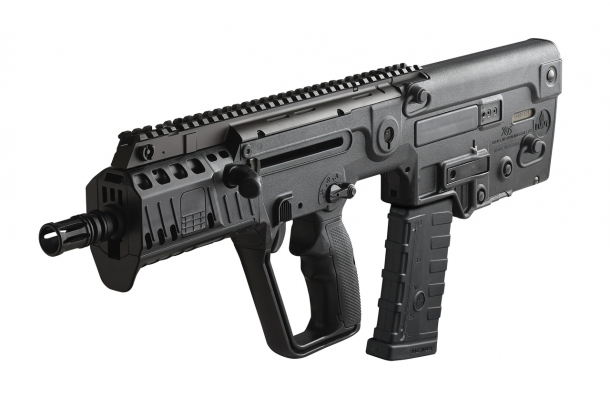
The IWI X95 assault carbine as upgraded in 2015
The X95 assault carbine was launched in 2009 and was upgraded in 2015 with a new monolythic-style railed handguard with protective shells in lieu of the original round polymer handguard.
Available in 13", 15" or 16.5" barrel lenghts, the X95 assault carbine is chambered for the NATO standard 5,56x45mm round and can be converted to other rifle calibers such as the Russian 5.45x39mm M74 or the .300 AAC "Blackout".
A dedicated conversion kit including an 11" barrel and a straight blowback bolt assembly can also be used to convert the standard X95 into a closed-bolt, 9x19mm caliber sub-machine gun fed through UZI magazines.
As of today, the X95 has been sold to a vast number of law enforcement units worldwide and has been adopted by the military forces of at least six Countries – including Israel, where it has already been successfully fielded by special forces units and where it's planned to become the standard service weapon for frontline infantry units, while all other Tavor rifle versions should replace the M16 and Galil rifles still in use in other units.
The full set of Picatinny rails allows the IWI X95 assault carbine to be fitted with iron, optical or electro-optic sights, tactical flashlights, laser sights and other target designation systems; the X95 is also compatible with underbarrel 40x46mm grenade launchers, including IWI's own GL40.

The controls on the IWI X95 semi-automatic rifle: a very practical setup
The civilian-grade version
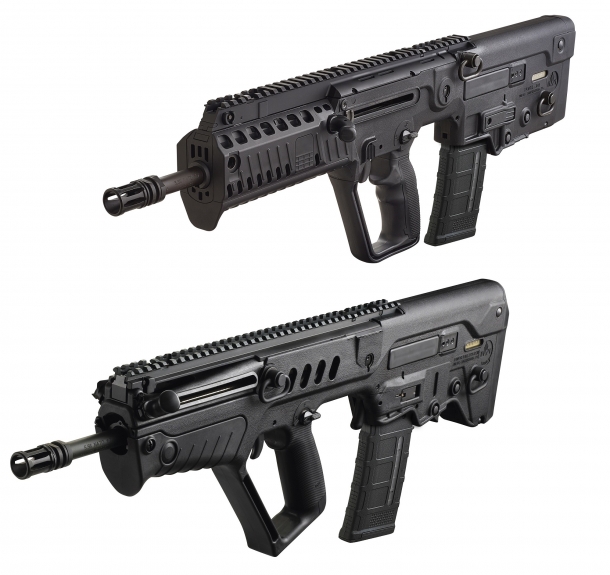
The IWI US X95 semi-automatic rifle, in comparison with the Tavor SAR rifle
IMI – later IWI – immediately conceived a semi-automatic version of the baseline TAR-21 assault rifle, dubbed the TC-21, which however was meant as a Police patrol rifle and not as a commercially viable firearm.
Early on in the 2000s, talks were started with the US-based Barrett Firearms Manufacturing company to start local production of the TSR-21 "Tavor Sporting Rifle", but it never happened. A few years later, some Israeli-made IMI and IWI TC-21 semi-automatic rifles were imported and sold commercially into Canada.
Mass production and commercial availability of the Tavor bull-pup rifle in a semi-automatic, civilian-grade version came to be only when IWI US, Inc. was established in Harrisburg (PA) as a north American subsidiary of the Israeli company in 2012. IWI US was provided with its own manufacturing facilities to produce locally certain products and components that could not be exported from Israel, and the first Tavor SAR semi-automatic rifles hit the U.S. civilian market in early Summer 2013.
In 2015, while IWI upgraded the X95 assault carbine, IWI US launched the Tavor X95 semi-automatic bull-pup as a patrol rifle for Police and security forces, and as a sporting, hunting and defensive firearm for civilian shooters.
Today, the IWI Tavor X95 semi-automatic rifle is available in Europe, from companies like Prima Armi and several other distributors.
Available in black and flat dark earth variants, the Tavor X95 semi-automatic rifle can not be converted to select-fire or fully-automatic operation and will not accept the components that allow the select-fire or full-automatic operation of its military-grade counterpart.
Read also: IWI Tavor X95, the "civilized" warrior (field evaluations)
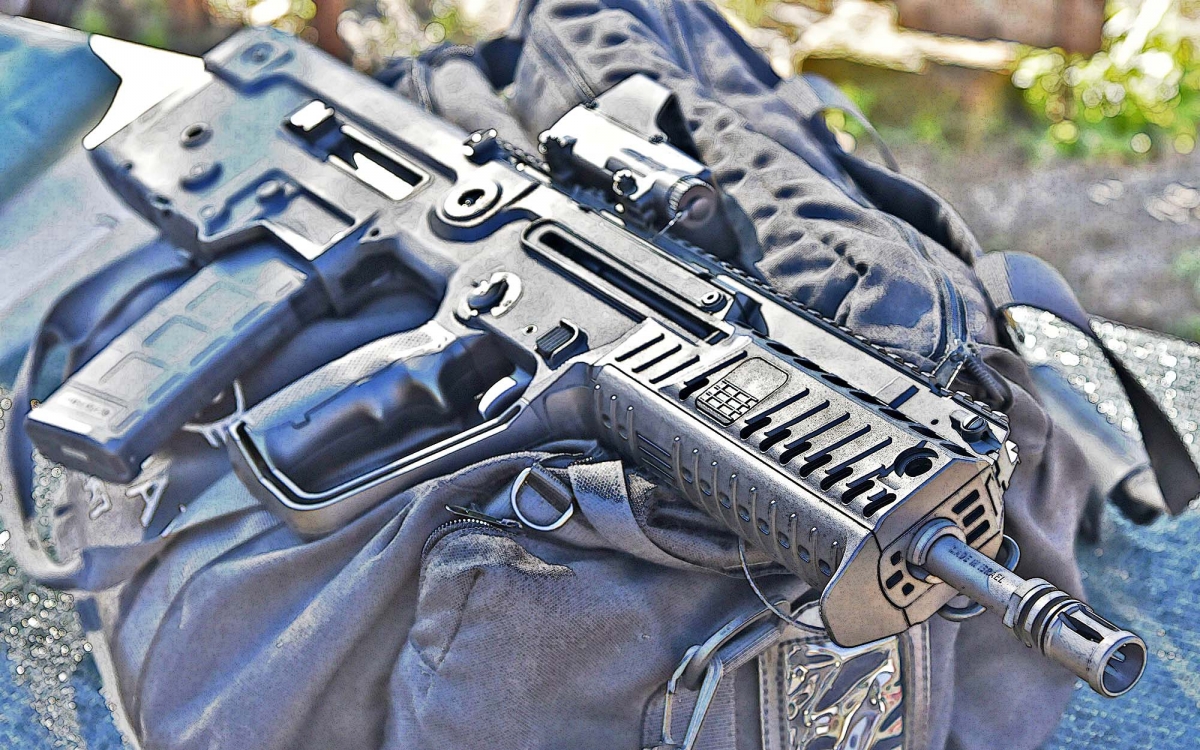
The IWI Tavor X95, in the semiauto version for the civilian market

